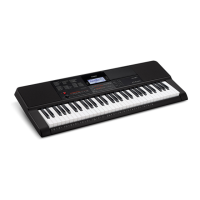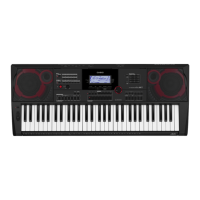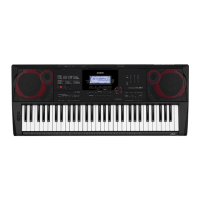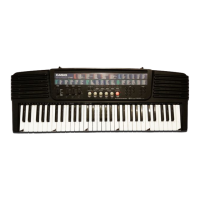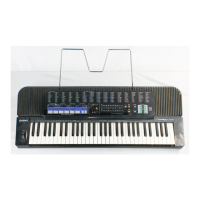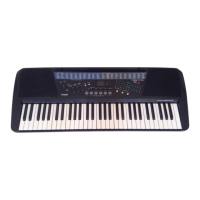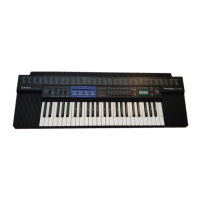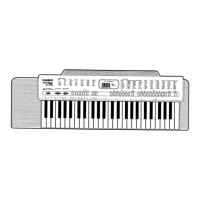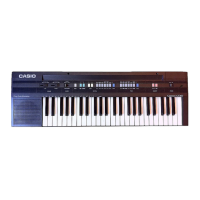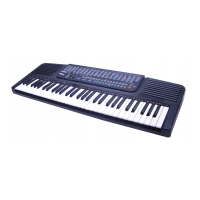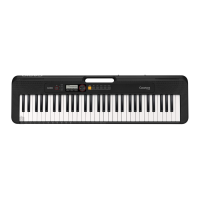EN-35
Controlling Sounds
5.
Use bn [–] and [+] or the bl dial to specify a
DSP module.
6.
Use the [1] (V) and [3] (W) bm number keys
to display “DSPParam” (the target DSP
parameter).
This displays the name of the first parameter of the DSP
module you selected in step 5.
7.
Use bn [–] and [+] or the bl dial to display the
parameter you want to change when
dt MODULATION/ASSIGNABLE is pressed.
8.
Use the [1] (V) and [3] (W) keys to display
“DSPValue” (value when DSP is turned on).
9.
Use bn [–] and [+] or the bl dial to change the
setting value applied when dt MODULATION/
ASSIGNABLE is pressed.
10.
When the setting is the way you want, long-
press the [4] (EXIT) bm number key to exit the
setting screen.
• The assigned DSP modules depend on the tone. To check
the DSP modules for each tone, perform the procedure
under “To use DSP editing to edit an effect” (page EN-72).
The transpose feature lets you raise or lower the overall pitch
of the Digital Keyboard in semitone steps. You can use this
feature to adjust keyboard pitch to a key that better matches a
vocalist, another musical instrument, etc.
1.
Press the ds TRANSPOSE [w] or [q] button.
This displays “Trans.”
• You can change the pitch of the keyboard within the
range of –12 to 00 to +12.
• While “Trans.” is displayed, you can use the bm
number keys, bn [–] and [+], or the bl dial to change
the setting value.
• Pressing bk FUNCTION or not performing an
operation for some time causes “Trans.” to disappear.
• The [TRANSPOSE] indicator will be displayed while the
transpose setting is something other than 0 (zero).
Octave Shift lets you raise or lower the pitch of the keyboard
in octave units. You can configure individual octave shift
settings for each of the keyboard parts* (UPPER 1,
LOWER 1, UPPER 2, LOWER 2).
• You can also specify the number of octaves to shift for each
part.
• With Quick Octave Shift, you can quickly shift octaves in
accordance with settings that are pre-configured for a part.
* See “Sounding Multiple Tones (Layer and Split)” (page
EN-19).
• The Octave Shift setting changes automatically when some
tones are selected. For details, refer to the “Octave Shift”
column of the tone list in the separate “Appendix”.
• The Auto Harmonize (page EN-52) sound depends on the
UPPER 1 part setting.
Parameter number Parameter name
Changing the Pitch in Semitone
Steps (Transpose)
To change the pitch in semitone units
Changing the Pitch of Each Part
in Octave Units (Octave Shift)
CTX5000_3000_EN.book 35 ページ 2018年2月26日 月曜日 午後3時56分
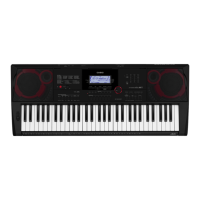
